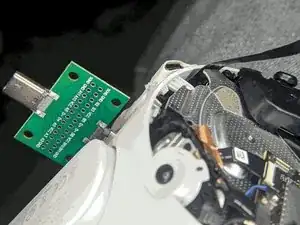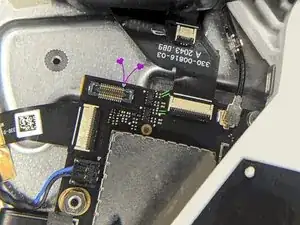Introduction
Tools
-
-
Hi!
-
If your Meta Quest 2 does not connect via USB, or the connection only works via USB 2.0, the connector on the cable or chip on the motherboard may be damaged. Below, I will show you how to test (based on comparing two Meta Quests, one with issues in the USB part and the other with no issues).
-
-
-
You need a USB3.0 testing plat like this, and/or open the Oculus Quest 2 body like in this tutorial until step 6:
-
-
-
-
If you insert the test board as shown in the photo, then: D- and D+ are the pins of the USB2.0 part of the connector; A2,A3 & A10,A11 & B2,B3 & B10,B11 are the TX and RX pairs of the USB3.0 part
-
The TX and RX pairs of USB 3.0 should be the same in both directions and A10-A11 & B10-B11 must be 600+\- during diode call in both directions
-
-
-
By disconnecting the connector from the board, you can see a picture as in the photo. The purple mark is the first pin of the connector. Let it be #1, and let it be #2 to the left, then:
-
#2 will be B11 & #3 will be B10
-
#5 will be A2 & #6 will be A3
-
#8 will be A10 & #9 will be A11
-
#11 will be B3 & #12 will be B2
-
In the second row, same counting from the right:
-
#4 will be D+ & #5 will be D-
-
-
-
Four green strokes in the previous photo - these are the same A11-A10 and B11-B10 after the multiplexers (the most delicate and unprotected parts of the port - they damaged first)
-
There are no separation capacitors, as you can see (due to the required wire length).
-
If they get a supply voltage or a signal from the USB2.0 part - they burn out and stop diod calling mirrorily.
-
As far as I know, the damage is irreversible and occurs in the main chip on the board (repair is not advisable).
-
To reassemble your device, follow these instructions in reverse order.



